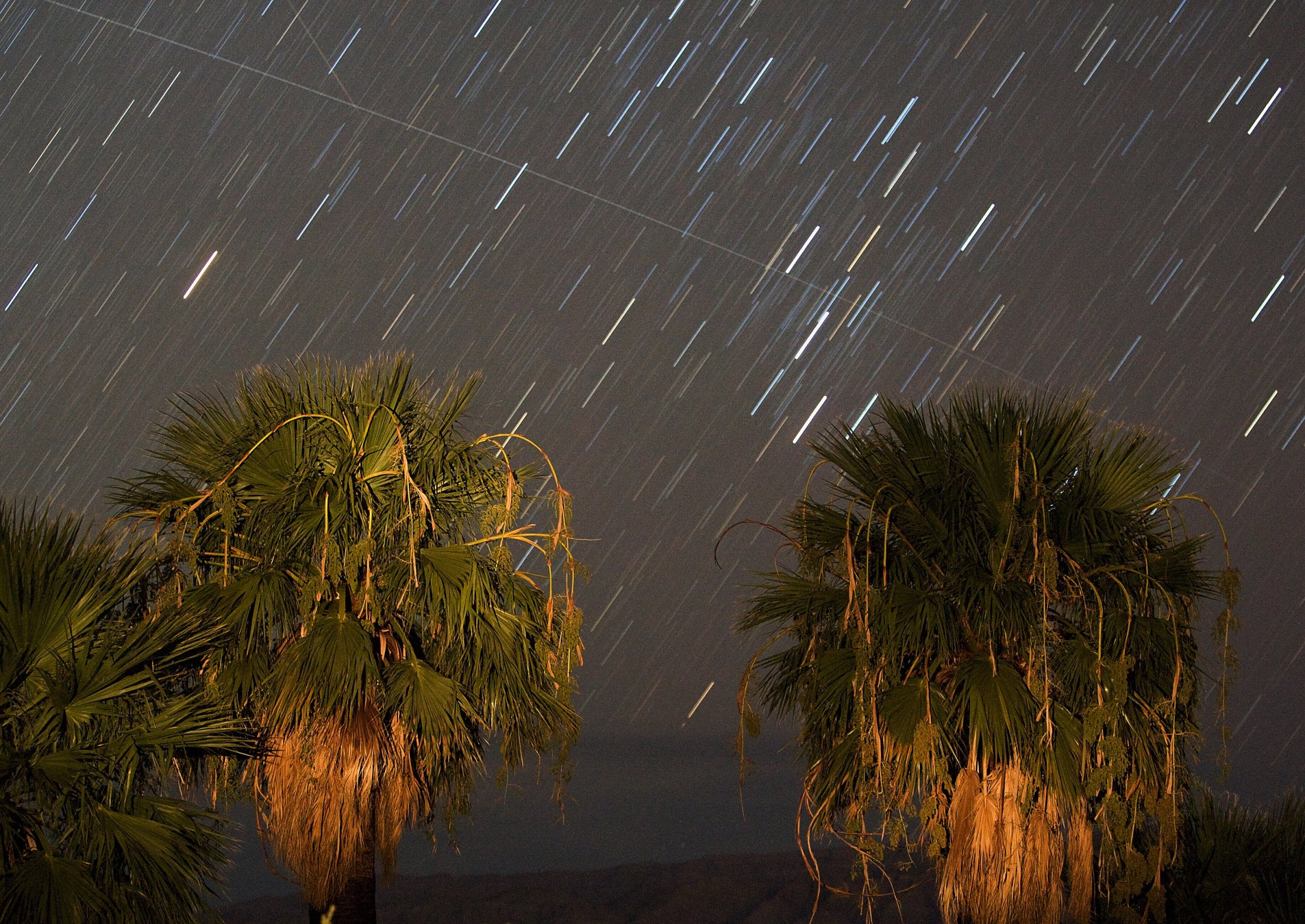
Space is a punishing place—frigid, airless, sizzling with radiation. But for so unforgiving an environment, it does put on stunning spectacles, with its comets, eclipses and, for people with telescopes, dazzling views of exotic worlds like ringed Saturn and its litter of moons. This time of year, space regularly stages one of its most dazzling productions: the Perseid meteor shower. The brightest meteor shower of the year began on July 14 and will continue until Sept. 1, but peaks this week on Aug. 11, 12, and 13.
The best viewing hours are from midnight to just before dawn—though the first sparkles may appear as early as 10 p.m. regardless of your time zone. In the prime viewing time, skygazers in dark surroundings, away from cities and streetlights, can expect to see up to 100 meteors per hour, according to NASA. Those viewing from the suburbs will see about 10 meteors per hour and city dwellers are likely to see none at all.
The Perseid shower occurs when the Earth reaches the point in its orbit around the sun when it passes through the ice, rock, and dust trail of the comet Swift-Tuttle. Swift-Tuttle was discovered in 1862 by astronomers Horace Tuttle and Lewis Swift, who were not working together. Swift, an amateur California-based astronomer, saw the streaking object passing the Earth on July 15 of that year. On July 18, Tuttle, a Harvard astronomer, also spotted the comet. Since they discovered and reported their finds virtually contemporaneously, they were both accorded the honor of having the comet bear their name.
The largest object to pass regularly by Earth, Swift-Tuttle measures 26 km (16 mi.) across—or more than twice the size of the asteroid that wiped out the dinosaurs. The comet takes 133 years to make one complete passage from deep space, toward the inner planets, around the sun, and out and back again. It last barnstormed Earth in 1992, and will not pass our way again until 2125. But it left a portion of its tail behind, and it is that residue we have to thank for the Perseids.
More From TIME
The particles that make up the remains of the tail range in size from that of a grain of sand to a pea—though there are a handful that are bigger. When the Earth passes through the tail, the objects slam into the atmosphere at a speed of 59 km/sec (37 miles per sec)—or 212,400 km/sec (133,200 mph)—which causes them to heat up to 1,650°C (3,000°F) and glow brilliantly, if fleetingly. Occasionally, brighter, so-called fireballs appear as well—the result of larger pieces of Swift-Tuttle debris hitting the atmosphere.
Read More: 15 Breathtaking Photos of Meteor Showers
Viewers in the southern hemisphere are pretty much out of luck on this particular meteor shower since the Perseids are visible only in the north, appearing to emanate from the constellation Perseus—which is how the meteor shower got its name. Perseus is found in the northeastern night sky and is a comparatively dim and often hard-to-find constellation. Fortunately, it is located close to the constellation Cassiopeia, which is much brighter, and recognizable by its distinctive W shape.
Both professional astronomers and amateur stargazers recommend giving your eyes at least half an hour to acclimate to the dark in order to find Cassiopeia and see the incoming meteors. The peak moment on the three peak days of the Perseids shower will be 4:00 a.m. ET on Aug. 13, when the Earth will pass through the densest part of the Swift-Tuttle tail.
Last year’s Perseid event, while not a bust, was nonetheless a disappointment, since it occurred when the headlamp of a full moon was in the sky, washing out the dimmer illumination of the meteors. This year, viewing conditions are much better: the moon is currently a waning crescent, glowing at only 10% of its maximum brightness.
If you miss the Perseids, you don’t have to wait a full year to see another meteor shower; there will be others, though none as bright as the Perseids. The Orionoid meteor shower—which comes from the tail debris of Halley’s comet—will occur in October; that will be followed in November by the Leonid shower, caused by remains of the tail of comet Tempel-Tuttle; and finally, December will see the Geminid meteor shower, whose debris comes not from a comet, but from the asteroid Phaethon. Astronomers have not yet determined how an asteroid could leave a trail of dust and particles sufficient to cause a meteor shower, though there are theories. As NASA explains, Phaethon might have collided with another object, giving off a shower of pebbles and dust; it also might be a dead comet, with too little volatile material like water on its surface to glow, but with tail material nonetheless; it may also be a so-called rock comet, an asteroid that comes so close to the sun that solar fires scorch dust from its surface.
But all of that is for later. This week is the Perseids’ week—an annual gift from a cosmos that most of us will never touch, but that all of us can see and celebrate.
More Must-Reads From TIME
- The 100 Most Influential People of 2024
- Coco Gauff Is Playing for Herself Now
- Scenes From Pro-Palestinian Encampments Across U.S. Universities
- 6 Compliments That Land Every Time
- If You're Dating Right Now , You're Brave: Column
- The AI That Could Heal a Divided Internet
- Fallout Is a Brilliant Model for the Future of Video Game Adaptations
- Want Weekly Recs on What to Watch, Read, and More? Sign Up for Worth Your Time
Write to Jeffrey Kluger at jeffrey.kluger@time.com